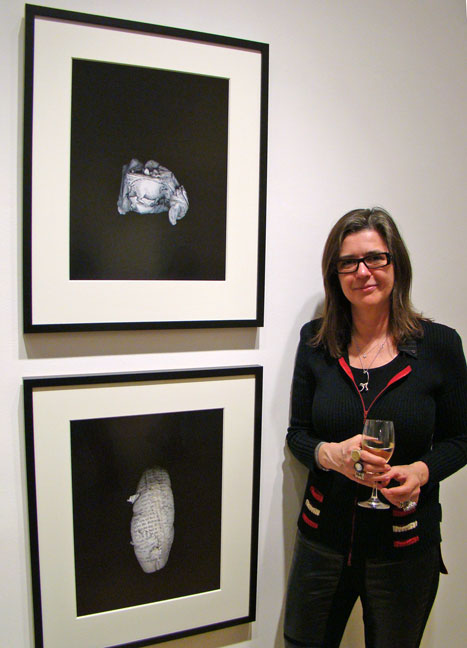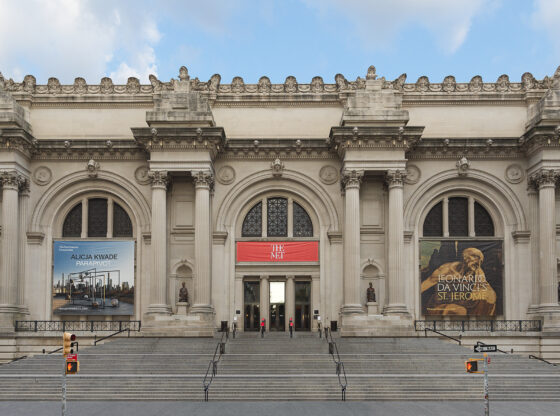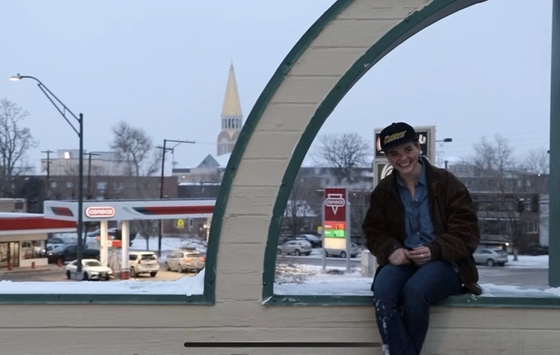
With the countless amount of promotional flyers that are posted around this school every week, it’s often hard to keep all of the opportunities to witness guest speakers coming to DU’s campus straight. When intuition calls for you to go do something, however, do not hesitate, as you could be missing out on one the most interesting presentations of your college career. You’ll simply never know unless you go.
Last Wednesday evening, the second night of the DU studio art program’s lecture series, “Collaborations,” featured associate professor of photography at California State University, Sacramento, Nigel Poor, in the Shwayder Art Building (SAB). While flyers for this event were generic in their description, SAB room 119 was a full house that night, as students, faculty and community members alike gathered to hear Poor speak about the intricacies of her unique work.
“She does a lot of projects with things you’d otherwise overlook, like dead flies and fingerprints,” said DU photography professor, Roddy MacInnes.
According to Poor, there as an underlying theme of “Imposing Order” to both her artwork as well as her personal life, in terms of her ongoing search to find meaning in life’s repetitiveness. The first half of Poor’s presentation dealt with six of her most recent conceptual projects pertaining to this theme, and many of them were each conducted over the course of a year’s time span, a tribute to the various chapters of her life.
Many of Poor’s projects were conducted over the course of a specific year and signify the various chapters of her life. One of the projects she discussed, entitled, “What Did Not Go Down The Drain: The Year I Took A Tenure Track Job,” was Poor’s daily collection of her own hair strands which she took out of the bathtub drain in her home and scanned onto her computer. While the amounts of hair differed from day to day, signifying the various amounts of stress Poor endured over the course of her job, Poor proclaimed these representations to be transformations of something beautiful, “almost like a line drawing,” she said.
Another project she touched on, entitled, “287 Flies,” was Poor’s personal collection of 287 dead flies that she discovered over the course of yet another new year.
“Photography has a way of revealing things that are invisible to the eye,” said Poor, commenting on the human tendency to consider most flies to look identical. Poor’s project opted to prove this generalization wrong, as the details of each individual deceased fly were cased inside petri dishes that she would later mount to various gallery walls in the form of installations.
Poor described her fly images as depictions of the various ways to think about eternity.
“When we’re alive we’re the protagonist of our story and then we become a footnote . . . it’s kind of a hard concept to grapple with,” she said.
While these six works had a captivating effect on the audience that evening, sentiment undoubtedly shifted during the second half of Poor’s presentation, as she transitioned into talking about her voluntary work as a photography teacher for the Prison University Project through Patten College at San Quentin State Penitentiary.
“It’s the only on-site college program in a California prison,” said Poor, “through which inmates can go so far as to earn their Associate’s Degree.”
According to Poor, many of the men she teaches at San Quentin are serving 15-20-year long sentences—most of them serving 25 to life—yet she said the fire and passion many of them have to learn is unlike anything she has ever seen.
One of the most chilling moments of Poor’s presentation was the story she told of one of the inmates who got sent to solitary confinement when he was enrolled in one of her classes. Poor explained that those who are given this punishment are neglected the knowledge of how long they will be there for, which she said is an often torturous experience for all aspects of the human body and mind.
Poor was able to persuade the prison to allow this man to take with him two of the photographs from her class, with which he chose to write a nine-page paper on over the course of his stay. Poor showed these photographs on her PowerPoint while playing an audio recording of this student reading his work aloud, giving the audience a real live glimpse into the thoughts and emotions of a prison inmate.
“I’ve never known anyone who’s gone into prison,” said senior Rachel Devine, art history and photography double-major, from Denver, who found out about Poor’s talk that evening from the various posters around SAB. “I guess I’m seeing prisons in a different way now—maybe it’s just how everything in there is analog … no one’s allowed to have any type of electronics whatsoever.”
Aside from teaching her photography class at San Quentin, Poor has also taken on a radio project, titled the San Quentin Prison Report (SQPR), which airs on the Bay Area public radio station KALW 91.7FM on their show Cross Currents.
“The inmates and I together are producing, editing, recording—all inside of San Quentin,” said Poor, who visits the prison one or two times during any given week, often tailoring her paid teaching position at CSU-Sacramento so that she can frequent the prison more.
According to DU Associate Professor of painting Deborah Howard, Poor was brought here by the Marsico Grant, and aside from Wednesday night’s presentation, she will be meeting with senior BFA students in the senior practicum class to critique their independent artwork, taking the time to speak with the BA students in their workshop as well.
For more information on Nigel’s work, students are ecouraged to visit personal her website and view her portfolio.











